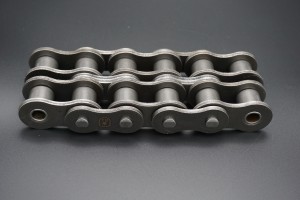Roller chains are a staple product in various industries such as machinery, automotive and agriculture. These versatile chains are designed to efficiently transmit mechanical power, making them an integral part of many applications. However, selecting the correct size roller chain can often be a daunting task, especially for those new to the field. This comprehensive guide aims to demystify the process and make it easier for users to determine the ideal roller chain size for their specific needs.
Learn about roller chain sizes:
Before delving into the intricacies of selecting the correct roller chain size, let’s familiarize ourselves with the system used to specify its size. A roller chain is characterized by its pitch, which represents the distance between the centers of two adjacent roller pins. Pitch is expressed in inches or metric units (for example, 0.375 inches or 9.525 millimeters).
Step 1: Identify your requirements:
In order to determine the proper roller chain size, it is critical to evaluate the requirements of a specific application. Consider the following factors:
1. Power Delivery: Estimates the power requirements of the system in units of horsepower (HP) or kilowatts (kW). Determine maximum power output and any potential overload conditions.
2. Speed: Determine the rotational speed (RPM) of the drive sprocket and driven sprocket. Consider the desired operating speed and any potential speed fluctuations.
3. Environmental factors: Consider operating conditions such as temperature, humidity, dust, or any corrosive agents that may be present.
Step 2: Calculate the chain length:
Once the requirements are determined, the next step is to calculate the appropriate chain length. This is determined by the distance between the centers of the driving sprocket and the driven sprocket. Use the following formula:
Chain length (pitch) = (number of teeth on driving sprocket + number of teeth on driven sprocket) / 2 + (center distance / pitch)
Step 3: Consider Tension Requirements:
Proper tensioning is critical to the life and efficiency of roller chains. Insufficient tension can cause the chain to slip, causing premature wear and reducing power transmission. Conversely, excessive tension can strain the chain, causing increased friction and potential breakage. Consult the manufacturer’s guide to determine the optimum tension range for your particular chain size and application.
Step 4: Verify load capacity:
The load capacity of a roller chain is determined by its size. It is critical to verify that the selected chain is capable of handling the expected load. Manufacturers often provide load capacity charts that take into account various factors such as tensile strength, roller diameter and material. Choose a roller chain that exceeds the load requirements of your application to ensure longevity and reliability.
Correct sizing of roller chains plays a vital role in the smooth operation of power transmission systems. Proper chain sizing can be accurately determined by carefully evaluating power, speed, environmental conditions and tension requirements. Remember to consult the manufacturer’s guidelines and load capacity charts to ensure the longevity and reliability of your system. With a solid understanding of the sizing process, you can confidently select the ideal roller chain for your application, paving the way for optimum efficiency and performance.
Post time: Jul-19-2023

